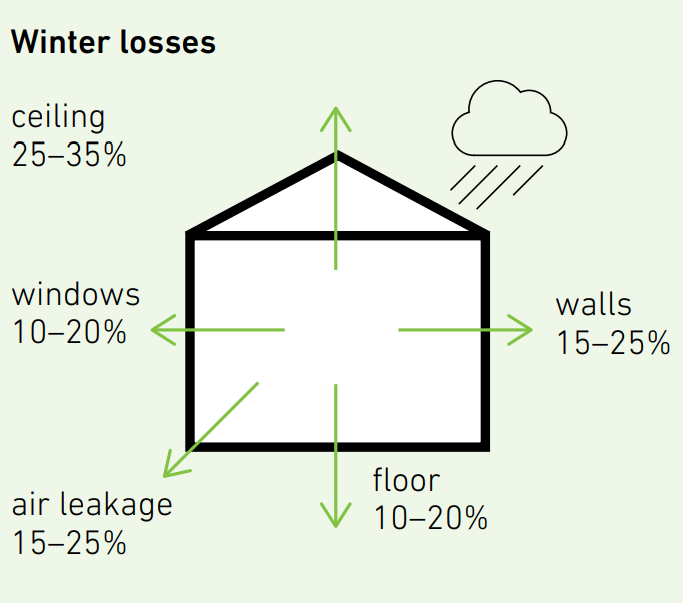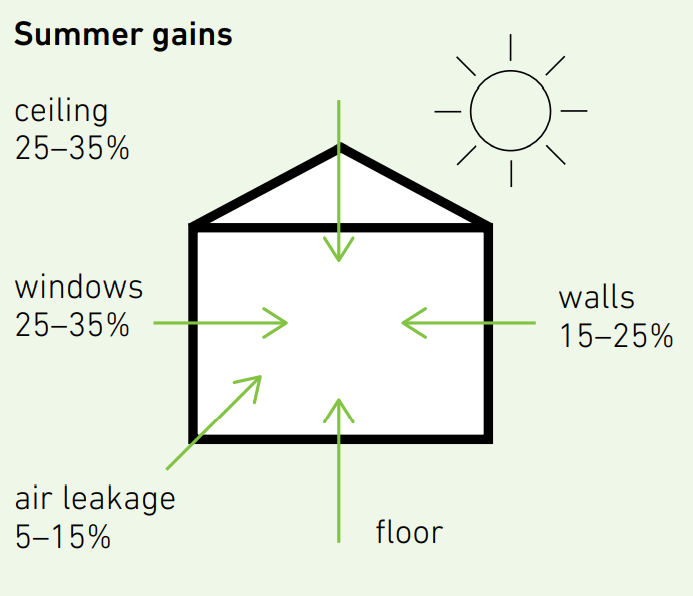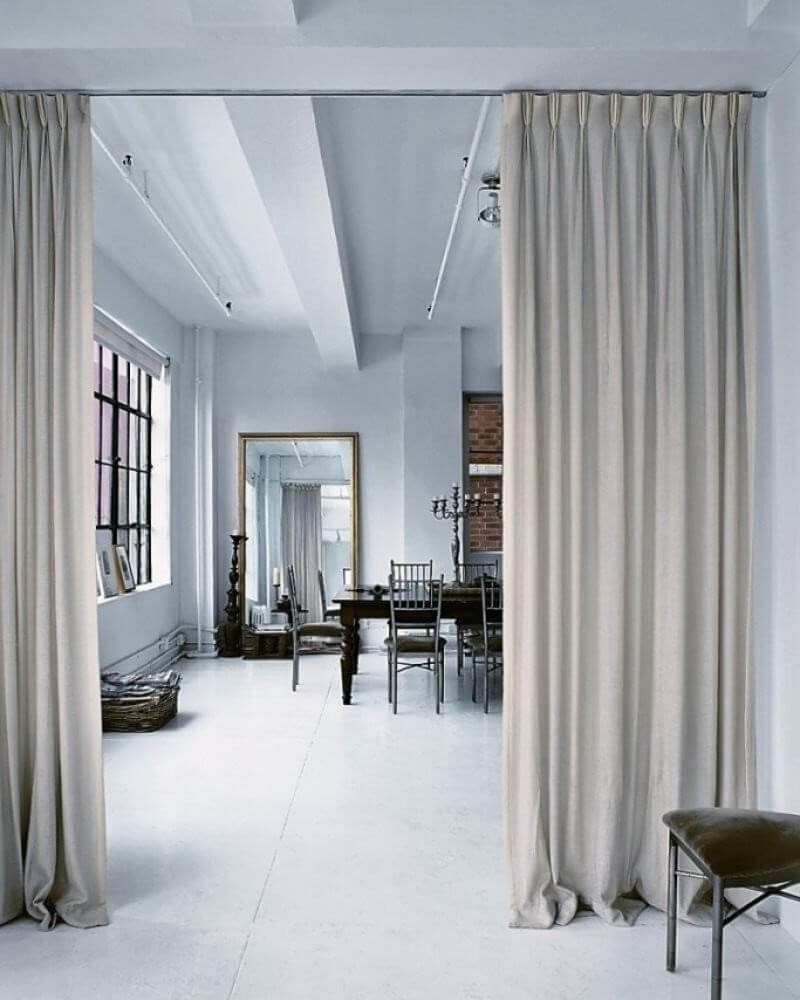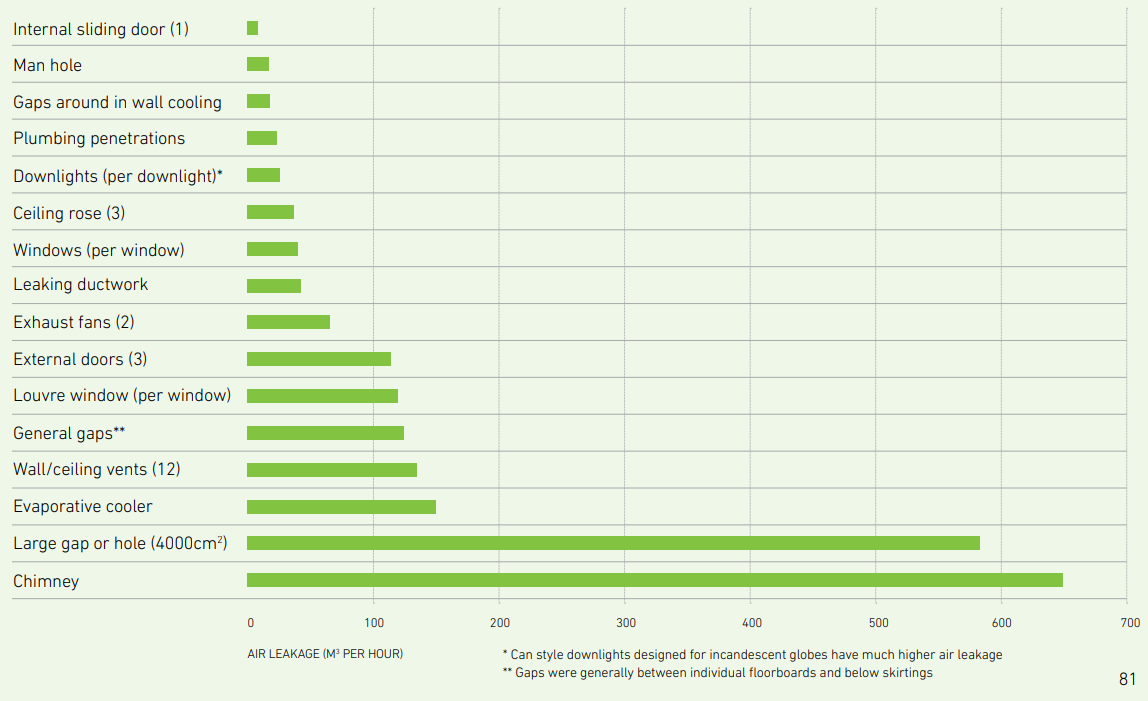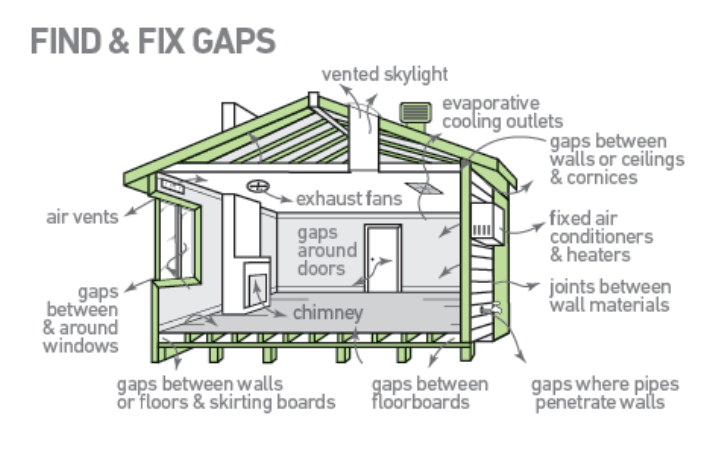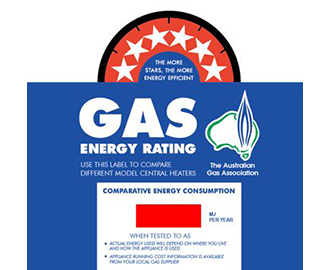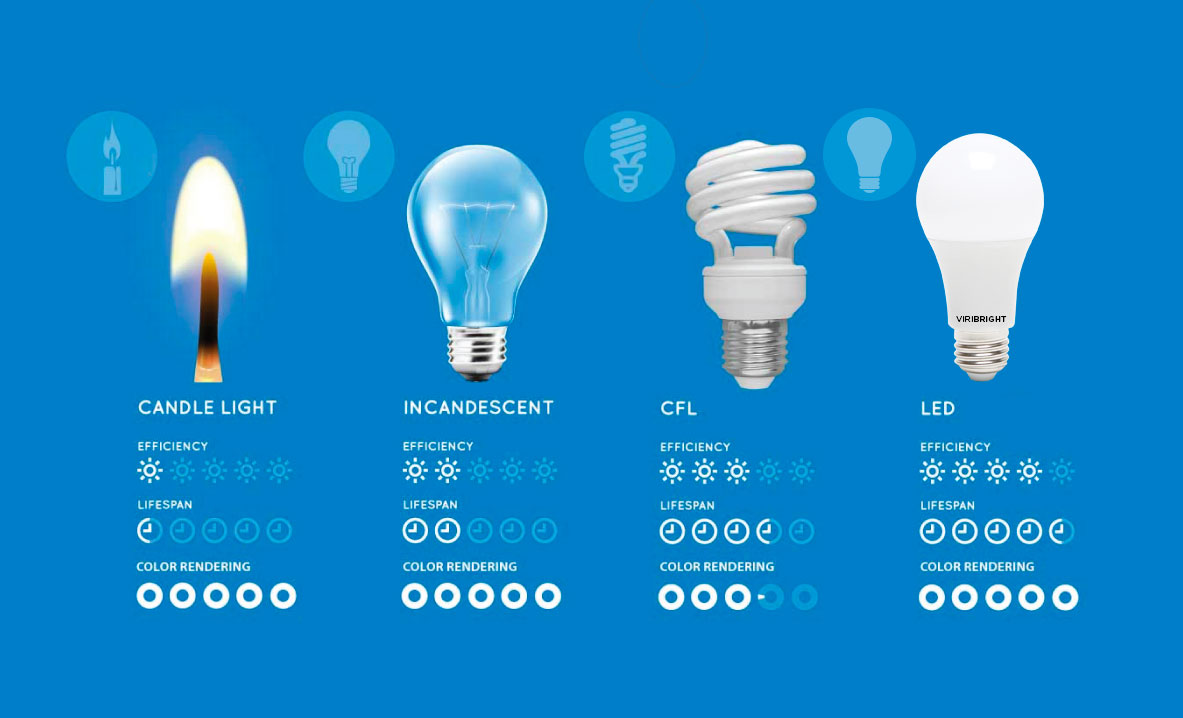Home Energy Efficiency Toolkit
Tools and information to help you increase your level of comfort, reduce your energy bills, and reduce CO2 emissions in your existing home.
Wangaratta Landcare & Sustainability are committed to helping you achieve a more energy efficient home with this resource.
Welcome to the WLS Home Energy Efficiency toolkit. Using the resources provided, you’ll be able to better understand what home energy efficiency is, why it matters, what the major impacts on it are, types or energy rating systems, and the basics of energy efficiency that relate to your home and appliances.
Browse the topics below to see how your home ranks, and how you can make energy-efficient changes that make an impact!
An Introduction to Home Energy Efficiency
Energy Efficiency and the Top 5 to Tackle
Energy efficiency is a vital step on the path to not only becoming a carbon neutral economy, but to increase the quality of life you can experience right now in your existing home.
And making improvements to the way you heat and cool your home, use your appliances, and how you protect yourself from mother nature, all add up to significant energy reductions that can reduce your energy bills by over 45% depending on the number of changes you make.
So what improvements can you make to your home to capitalise on these savings? It turns out there are 5 key elements to create an energy efficient home:
- Orientation and Zoning
- Windows
- Insulation
- Ventilation & Draught Proofing
- Energy Efficient Lighting & Appliances
View the video below to learn more.
The Main Energy Users In Your Home
In any given year, the average Victorian household will use approximately:
- 38% of energy on heating
- 15% of energy heating water
- 11% of energy running fridges and freezers
- The remaining 36% on other household appliances.
Based on this information, it’s clear to see that focusing on the top three (heating, water heating, refrigeration) will make the most significant impact on home energy efficiency.
The most significant and number 1 – Heating – can be reduced by improving the efficiency of your building.
Building Efficiency
Fans, air conditioners, and heaters are all forms of active heating and cooling which play their part in your home – albeit at a cost.
But improving the efficiency of the structure of your home will yield passive heating and cooling benefits that, once installed, have little to no ongoing cost since they work on their own without additional energy (such as electricity or gas). They will also reduce your need for active heating and cooling.
To achieve increased building efficiency, we’ll look at techniques that focus on zoning, draught sealing, insulation, and your windows.
Why Building Efficiency Matters
Increasing building efficiency means reducing unwanted heat transfer through the structure of your home. Doing this can mean significant savings on your energy bills.
There are three ways in which heat is transferred—radiation, convection and conduction. Each contributes to either heat loss (in winter) or heat gain (in summer) for your home. The figures below show the typical heat flow values for a house in Victoria.
As you can see, there are considerable gains to be had in reducing the undesired flow of heat. You can achieve this by replacing/displacing the heat (active heating/cooling) or by altering the amount of transfer that is possible through the building structure of your home (passive) utilising:
- Zoning and orientation.
- Draught sealing.
- Insulation.
- Window improvements.
Using Zoning to Reduce Energy Consumption
A simple way to reduce how much energy your heating and cooling appliances use is to create as many zones within your home as you can, and heat and cool by zone rather than the whole home. Doing so can lower your heating costs by up to 40%
Unfortunately, ducted heating and cooling systems can be inefficient (unless they are modern, zoned units) because they are conditioning multiple areas all at once. Space heaters and coolers used in individual zones are always more efficient that whole-of-home systems.
DIY Zoning Techniques
You can create zones in your home in the following ways:
- Closing doors to rooms that are not used during the day, such as bedrooms, bathrooms, laundry, etc.
- For doorways or hallways that do not have a door, consider hanging a curtain (the thicker the better, but anything will do) using an expanding curtain rod that requires no fixed installation.
- Install fixed floor-to-ceiling room dividers that you can use to block off an area of your home that doesn’t require heating or cooling.
Keep Air In with Draught Sealing
Up to 25% of winter heat loss from existing houses is caused by air leakage (also known as draughts). Seal gaps around doors and windows to draught-proof your home and save energy and money.
Draught sealing is finding and fixing draughts to make your home more comfortable and energy efficient. Draughts are similar to ventilation, in that both let fresh air into your home. Good ventilation helps reduce condensation and damp and can help cool down a hot house. Draughts, on the other hand, are uncontrolled – they let too much cold air in and waste too much heat.
Draught proofing stops warm air from escaping your home in winter and hot air from entering in summer, saving you money and making your home more comfortable. Up to 25% of winter heat loss from existing houses is caused by air leakage (also known as draughts). In fact 9 out of 10 homes in Victoria have unwanted draughts.
How to Find Draughts
Draughts come into your house through gaps and cracks around doors, windows, exhaust fans, fireplaces and so on. To draught-proof your home you will firstly need to find the draughts.
- Look for obvious gaps
- Visible light under and around doors and windows is a good clue.
- Listen for rattles or whistling
- Take time out, especially during strong winds, to listen for rattles and whistling around doors and windows.
- Feel for moving air
- Feel around doors, windows, fireplaces, air outlets, vents, stairways, floorboards, exposed rafters and beams, built-in heaters and air conditioners, architraves and skirting boards.
- Look for movement in curtains
- Movement in and around curtains can be an indicator of draughts.
How to Fix Draughts
Much of the work of draught proofing can be done yourself, or you can hire a professional to do it for you.
Your approach to sealing draughts, and the products that you’ll need, will vary depending where the draughts are located. Check out the following links for areas of your home where draught sealing may be required:
Beware: Gas Appliances
Special care needs to be taken in houses that have internal gas appliances, especially houses with:
- Flueless gas heaters.
- A gas heater installed in a chimney.
- An open flued gas heater.
All flueless gas appliances require a certain amount of fixed ventilation to expel the products of combustion from the home and operate safely. Open flued gas heaters – which draw combustion air from the room in which they are located – require a supply of fresh room air to operate safely.
Fixed ventilation openings required for flueless and open flued gas heaters must not be blocked.
If you undertake draught sealing in your home and you have gas heating, you should get a licensed gas fitter to check the safe operation of the appliances before they are used.
Government Incentives Available
The Victorian Energy Saver Incentive Scheme provides support to Victorians who install certain draught-proofing and weather-sealing products.
Add Insulation, Save 45%+
Why Insulate?
Insulation is the cornerstone of an energy efficient home. Insulation is also the most cost-effective way to improve the energy efficiency and comfort of your home.
A fully insulated home compared to a non-insulated home can reduce the cost of heating and cooling a home by around 40 to 50%. Adding bulk insulation, either to new or existing homes, creates a more comfortable home year round, virtually eliminates condensation on walls and ceilings and can pay for itself in around five to six years.
- Comfort is improved year-round.
- It reduces the cost of heating and cooling by over 40%.
- It pays for itself in around five to six years.
- Because an insulated house needs less heating and cooling using insulation reduces greenhouse gas emissions.
- It virtually eliminates condensation on walls and ceilings.
- Some insulation materials can also be used for sound proofing.
Typical Energy Savings With Insulation Installed
| Extent of insulation | Heating | Cooling | Heating & Cooling |
|---|---|---|---|
| Ceiling Only | 15-25% | 30-45% | 20-30% |
| Ceiling & Walls | 40-50% | 40-55% | 40-50% |
| Ceiling, Walls and Floor | 45-55% | 35-50% | 45-55% |
NOTE: Insulation that is poorly / incorrectly installed will not give you benefits like this. Ensure you use a qualified installer or do your research on installation techniques specific to the insulation product that you choose.
Performance Rating of Insulation
All insulation materials are rated for their performance in restricting heat transfer. This is expressed as the R value or thermal resistance of a product.
The R value is a guide to its performance as an insulator – the higher the R value, the greater the insulating effect.
Products which have the same R value will provide exactly the same insulating effect as each other, provided they are correctly installed.
Comparison of Bulk Insulation Materials
The more stars (*) the better the performance.
| Insulation Material | Low Toxicity | Environmentally Friendly | Soundproof |
|---|---|---|---|
| Polyester | ** | ** | * |
| Natural wool | *** | *** | * |
| Glass wool | * | * | ** |
| Rockwool | * | * | ** |
| Cellulose fibre | ** | ** | * |
| Extruded or expandable polystyrene | * | * | ** |
Resources
Prevent Losses Through Windows
Did you know that:
- A single pane of glass can lose almost ten times as much heat as the same area of insulated wall?
- Internal window coverings and double glazing can reduce winter heat losses by up to 70%!
That means it’s worth taking some simple steps to reduce heat loss through your windows, making your home more comfortable and reducing your heating costs in the process.
Using Curtains
Appropriate window protection creates an insulating layer of still air on the inside of the glass. This can be achieved by the addition of thick curtains and a pelmet. A poorly fitted curtain allows heat loss to occur, while a well fitted curtain combined with a pelmet significantly reduces heat loss, so remember to:
- use closely woven, close fitting internal window coverings such as curtains or blinds
- ensure a snug fit on both sides of the window and at the top of the curtain to stop warm air from moving down behind the curtain and cooling
- install pelmets (like a scarf over the top of your curtain rod) or solid barriers above the curtain rail, or position the curtain within the window space
- use curtain tracks that provide a return of curtain to the wall to create a seal
- close curtains or blinds when you have the heating on, especially at night.
Using Blinds
If heavy lined curtains are not an option for you, thick, lined Roman blinds (that incorporate a pelmet or are attached to the wall or frame at the top of the window) or honeycomb blinds fitted inside the frame of the windows can be good options because they both stop air flow.
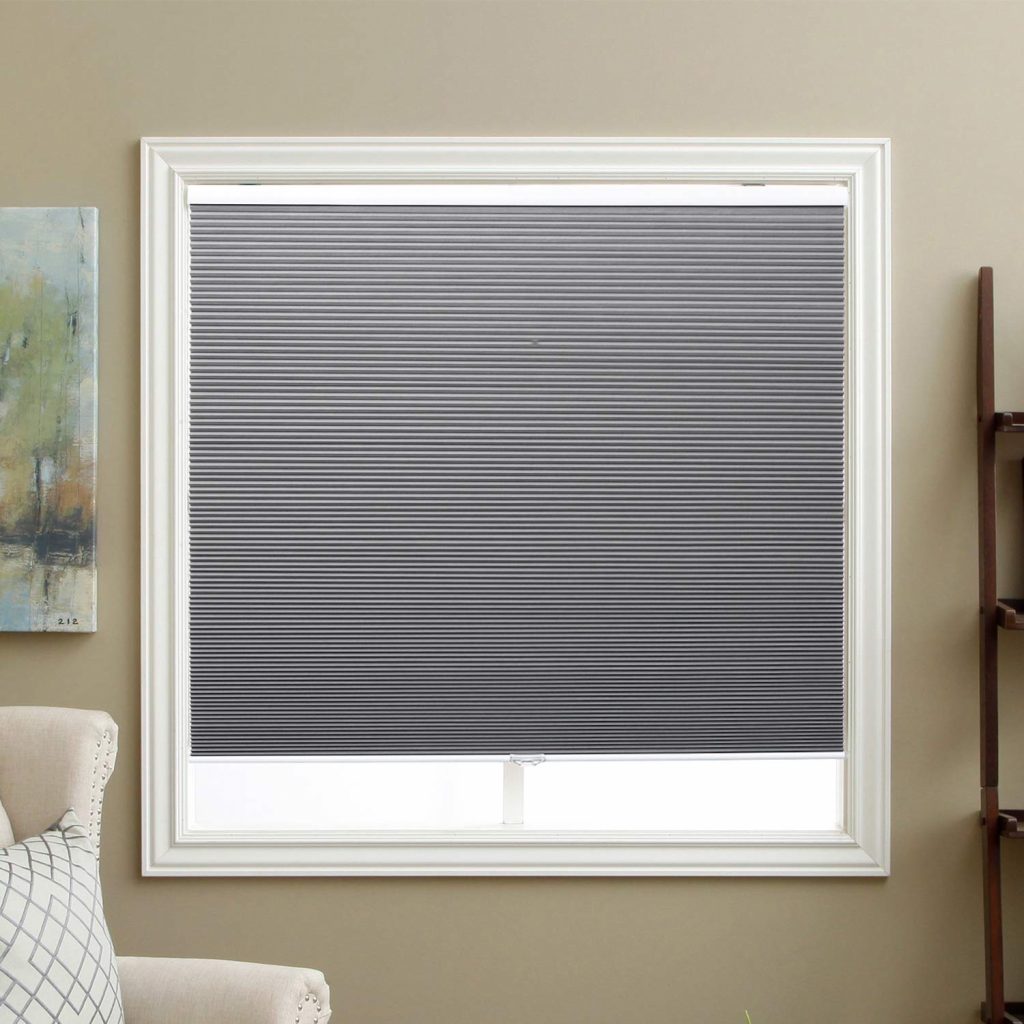
Whatever you choose – ensure it is fitted in such a way that the air flow across the window is as minimal as possible.
DIY Secondary Glazing
Secondary glazing is when you leave the original window in place and attach a second panel or either glass or clear acrylic, leaving a gap between both panes. This creates a double-glazing effect. This is a great choice if you have timber framed windows.
Professional Secondary Glazing
There are numerous companies who offer secondary glazing for your windows. It costs more than the DIY option but less than replacing the entire window unit (glass and frame) with a double-glazed unit.
Resources
Appliance Efficiency
How to Determine The Efficiency of Appliances
Energy rating labels allow you to conduct a like-for-like comparison of energy efficiency and consumption for most appliances and equipment in Australia.
This means you can:
- Buy more efficient models.
- Consume less energy.
- Save money!
- Reduce greenhouse gas emissions.
The more stars, the more efficient the product is. Most appliances are rated between 1 and 10 stars.
Since April 2020, a new Energy Rating Label has been introduced for air conditioners.
The new Zoned Energy Rating Label breaks down the systems efficiency over three climate zones across Australia and New Zealand. Most of Victoria is in the cold climate zone. The north western corner is in the mild climate zone.
Read the Energy Rating website’s guide to air conditioner Energy Rating Labels.
The Gas Energy Rating Label is required for gas heaters and gas water heaters as part of the gas product certification of Australia.
The label uses a 6-star rating to show how efficient a product is. The more stars, the more efficient it is.
Resources
Heating & Cooling Appliances
Making Your Heater Efficient
Heating your home efficiently will save energy and cost less to run. The key is to use your system so that it doesn’t work harder than it needs to and avoid losing heat.
Choosing an efficient heating system
Your choice of heater is an important factor that influences your energy costs for over a decade – or as long as the life of the system. For most Victorians, electric reverse cycle split systems are the most energy efficient, lowest cost heating option available.
Whichever type you choose, making sure it is the most energy efficient (based on the star rating) will ensure your energy bills are as low as possible.
Below are average heating costs for different energy-source appliances based on a 12m² room size. If your house has a rooftop solar PV system, the benefits of heating with electric reverse cycle systems can be even greater.
| Heater Type | Energy Star Rating | Annual Energy Cost |
|---|---|---|
| Gas room heater | 3 star (natural gas) | $125 |
| 5 star (natural gas) | $105 | |
| Room reverse-cycle air conditioner | 2 star | $120 |
| 5 star | $70 | |
| Electric portable heater | No ratings | $330 |
| Electric fixed heater | No ratings | $330 |
As you can see, the most efficient method of heating a room is to use a high-efficiency reverse-cycle air conditioner. And as room sizes increase, the distribution remains roughly the same. You can view all the data and an explanation of how it was calculated here.
Tips for operating your heater efficiently:
- Keep your windows and doors closed and reduce draughts as much as possible (as discussed earlier).
- Insulate the ceiling, walls, and floor of your home to reduce heat loss (as discussed earlier). Doing this can save you over 40% in heating costs.
- Close curtains and blinds to reduce heat loss through your windows, as long as there isn’t any winter sunshine coming through helping warm up your home.
- Only heat the areas you’re using. Use zoning (closing off rooms with doors, curtains, etc.) to minimise the area to be heated.
- Use an efficient temperature setting (between 18°C and 20°C ) – every additional degree of heating will increase running costs by around 15%.
- Use ceiling fans to aid in heat distribution. You can turn these on winter mode so that they pull air up from ground level, mix it with the warmer air at ceiling level and push it down the sides of the walls.
- draught produced is minimised.
- Dress appropriately. If it’s cold outside, don’t just crank the heater up. Put a jumper and your UGG’s on and save the planet (and your wallet) instead!
- Only heat your home when needed. Turn it off if you leave your home for any extended period of time.
Resources
Keeping Cool for Less
A high efficiency air conditioner will save energy and cost less to run. By choosing a system that is the right size for your home, you can avoid paying for energy you don’t need.
- Compare Star Ratings – The more stars in the blue band, the more you will save on your cooling costs. When you get a quote for an air conditioner, ask for the cooling and heating (if reverse cycle) output of the unit in kilowatts (kW) so you can compare different models. If possible, also get the rated input power consumption (in kW) of the unit on its cooling cycle (and heating if the system is a reverse cycle unit).
- A high efficiency reverse-cycle air conditioner will save energy and cost less to run.
- Not sure? Talk to a professional. This is an investment you want to get right from the beginning.
Tips for operating an air conditioner efficiently:
- Keep your windows and doors closed (unless you use an Evaporative cooler).
- Use zoning (closing off rooms with doors, curtains, etc.) to minimise the area to be cooled.
- Use sensible temperature settings (between 24°C and 26°C for living areas) – every degree lower in summer will increase running costs by around 10%.
- Use portable and ceiling fans wherever possible – they are much cheaper to run than air conditioners and can also be used in conjunction with your air conditioner to circulate cool air.
Resources
Your Hot Water System
Hot water accounts for around 15% of the average Victorian household’s energy costs. Most hot water is used in the bathroom, followed by the laundry and kitchen. The best way to reduce energy consumption by is to reduce the amount of water used (thus reducing the amount of water that requires heating!).
You can reduce water heating energy costs by consuming less hot water and installing an energy efficient water heater.
So, first and foremost, spend less time in the shower!
Then, fitting a low-flow shower head that uses less water than a standard shower head while still providing strong water pressure is essential.
When buying a low-flow shower head look for the water rating and flow rate. The higher the water rating and the lower the flow rate, the less energy and water you will use.
Hot Water System Types
There are 4 main types of hot water systems. In order of energy efficiency, these are:
- Heat pump- These are electric systems that use a heat pump cycle to heat the water using heat extracted from the air, rather than an electric element. When coupled with Home Solar Panels, this technology is extremely efficient. Read about heat pump hot water systems
- Solar- Water is heated mainly by the sun’s energy and uses either gas or electric boosting to assist with the heating when there isn’t enough sunshine. Read about solar hot water systems
- Gas- Water is heated using a gas burner. Available in storage and instantaneous models. Read about gas hot water systems
- Electric- Water is heated using an electric element. Available in storage and instantaneous models. Read about electric hot water systems
Government Incentives Available for Replacement
It’s better to know what you’ll replace your system with in advance, so when it does break down, you can quickly have it replaced with an energy-efficient option that’s within your budget. An efficient system will save you money and reduce your environmental impact in the long run.
Replacing an inefficient water heater with a high efficiency, more environmentally-friendly option can be eligible for a financial incentive under the Victorian Energy Upgrades scheme.
At the time of writing, incentives are available for replacing:
- electric storage water heater with a heat pump, solar-electric, high efficiency gas or gas-boosted solar system
- gas water heater with a gas-boosted solar water heater.
A 50% rebate up to $1,000 can also be available from Solar Victoria if you:
- install a solar or heat pump water heater
- have a household income under $180,000
- meet the other eligibility criteria.
For information on the annual running costs of different water heater types for different sized households, see Compare water heating running costs.
Resources
Fridges & Freezers
Fridges and freezers are one of the highest energy users in the home, on average, 11% of your energy bill. It’s important to consider more than the upfront cost of the fridge/freezer. Running costs over ten years could be between $600 and $2000.
Things to consider when buying a new fridge or freezer:
- Buy a fridge or freezer with a capacity that suits your needs. Don’t go too big.
- It’s more efficient to run one large fridge/freezer than two small ones.
- Choose a model with the freezer on top, as these models generally consume less energy than those with the freezer at the bottom.
- Energy Star Ratings matter: The more the better!
Resources
Lighting
If you’re using fluorescent (CFL) or LED bulbs, then you’re an energy saving superstar! Efficient lighting doesn’t get any better than that.
If you’ve still got halogen or incandescent bulbs in your home, then there’s no better time than the present to replace them with energy efficient options.
Rebates are available under the Victorian Energy Upgrades (VEU) program for the replacement of inefficient lightbulbs. You can potentially get your entire household lighting replaced for free by an accredited provider.
Household Appliances
Energy efficient home appliances often cost more to buy. But they save money in the long run, as you spend less money to run them. But no matter how efficient your appliance is, you need to use it efficiently to save money on your energy bills.
Sustainability Victoria pas published excellent guides to help you choose the right appliance for energy efficiency, and how use them efficiently. You can access these below:
Resources
Want to Speak to an Expert?
Wangaratta Landcare and Sustainability have access to trained in-home energy efficiency advisors that can visit your home at a time that suits you to conduct an assessment of your homes’ energy efficiency and help you navigate improvement options.
Get In-Home Energy Advice
Book a time with one of our trained in-home energy assessors today!
Further Reading
Below are some of the resources we used when creating this toolkit. Check them out if you’d like to dive deeper into home energy efficiency.


